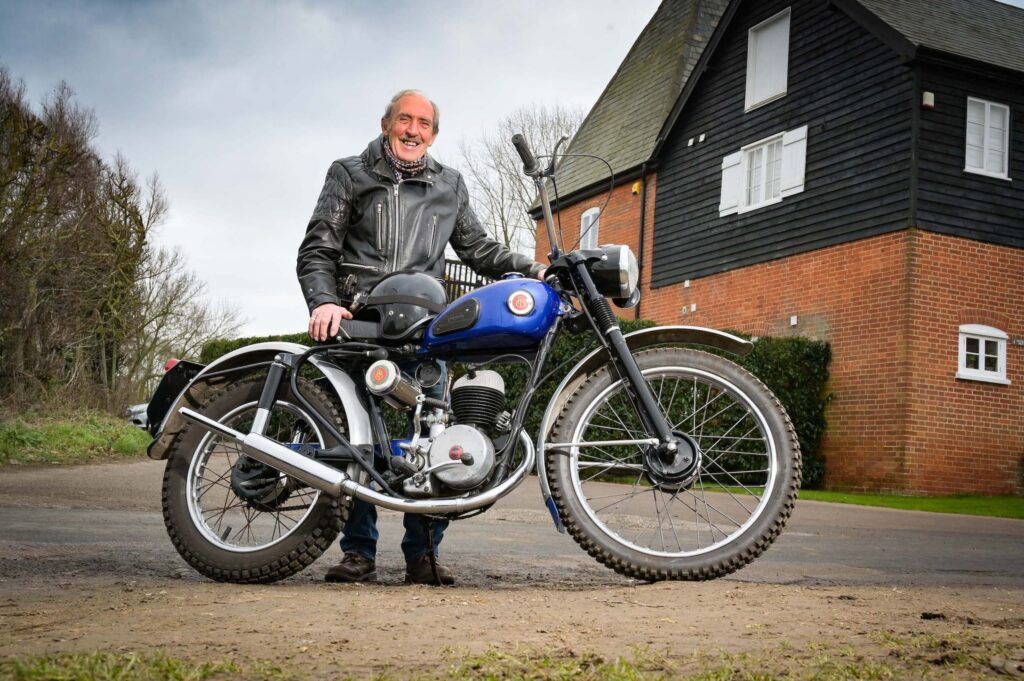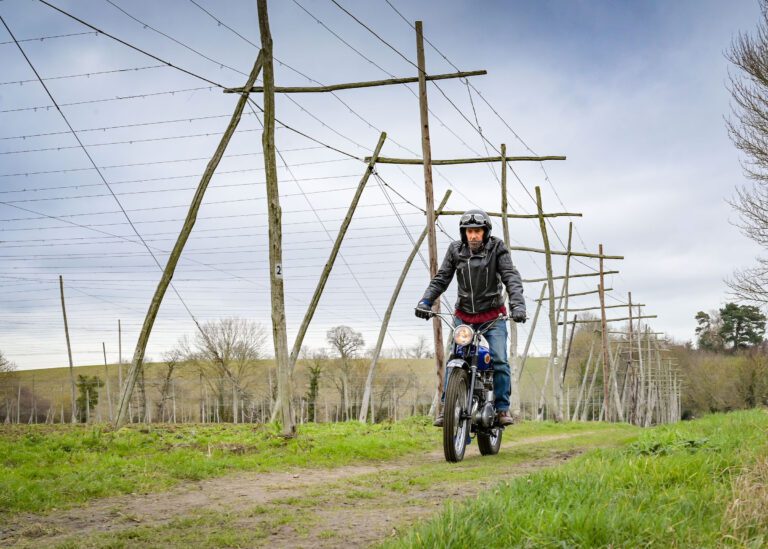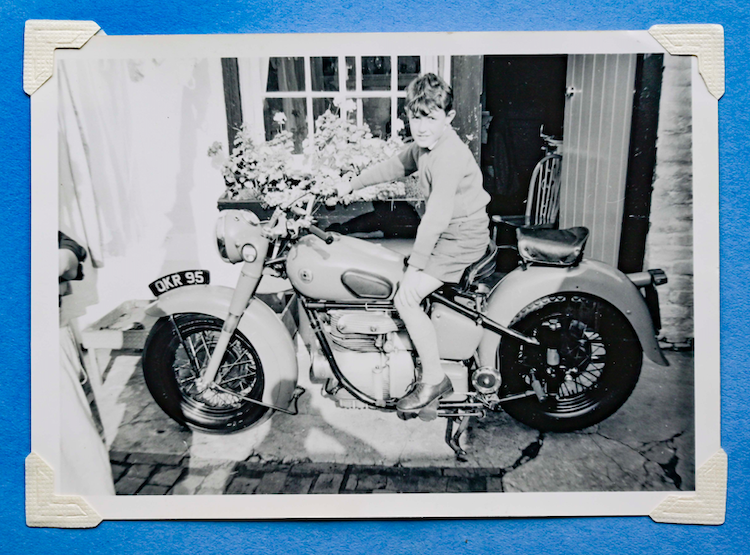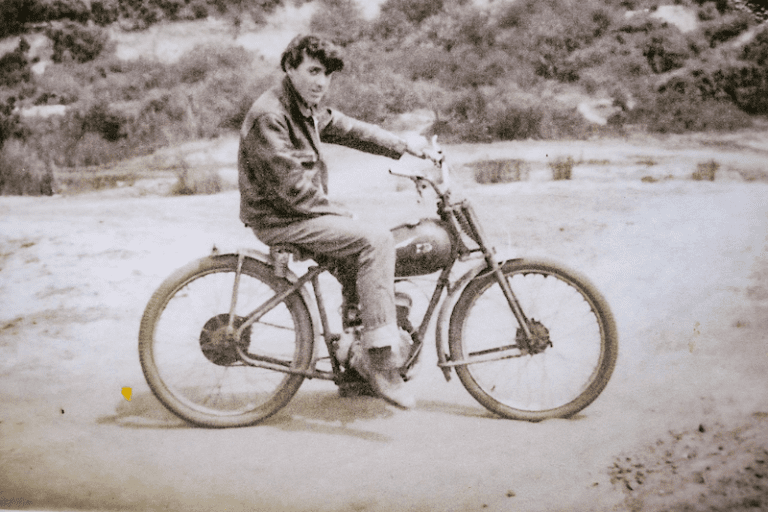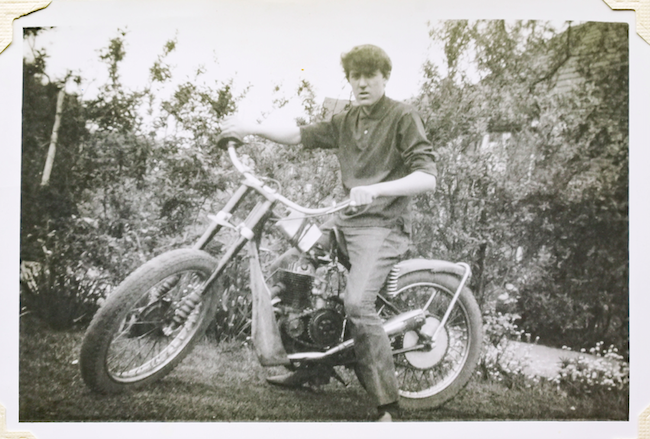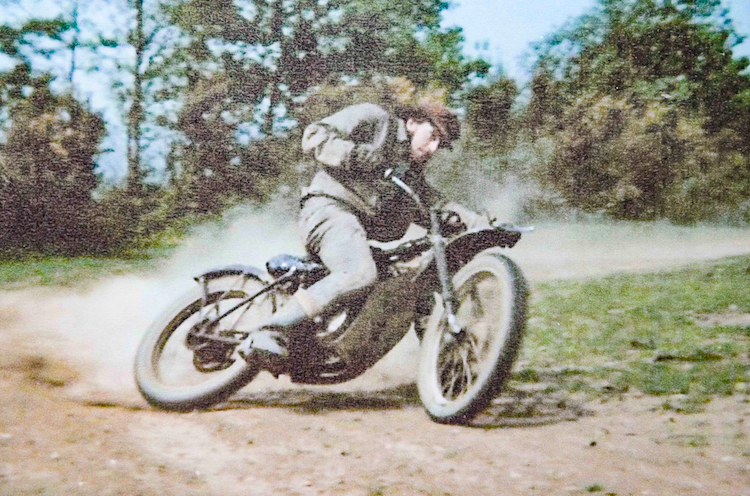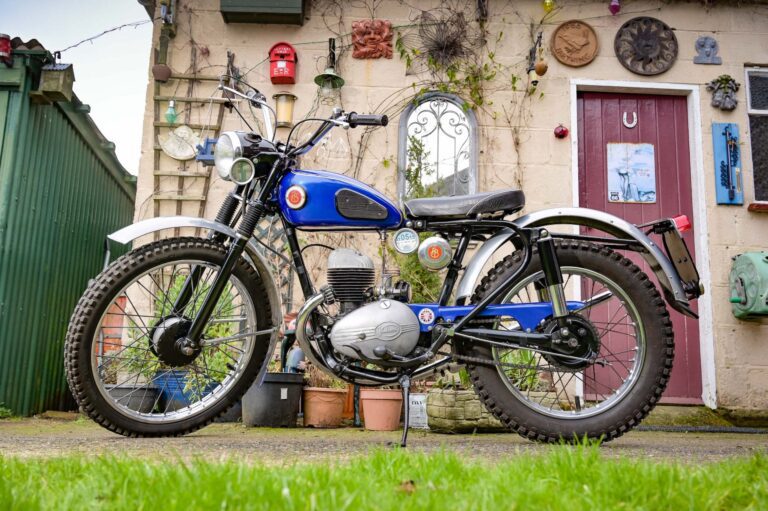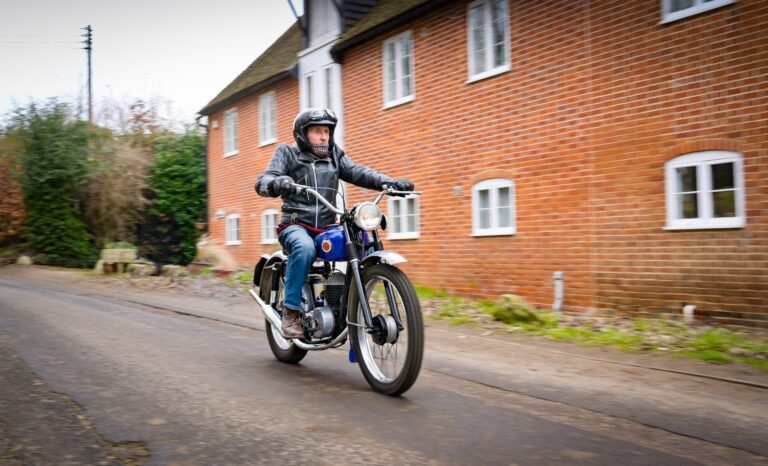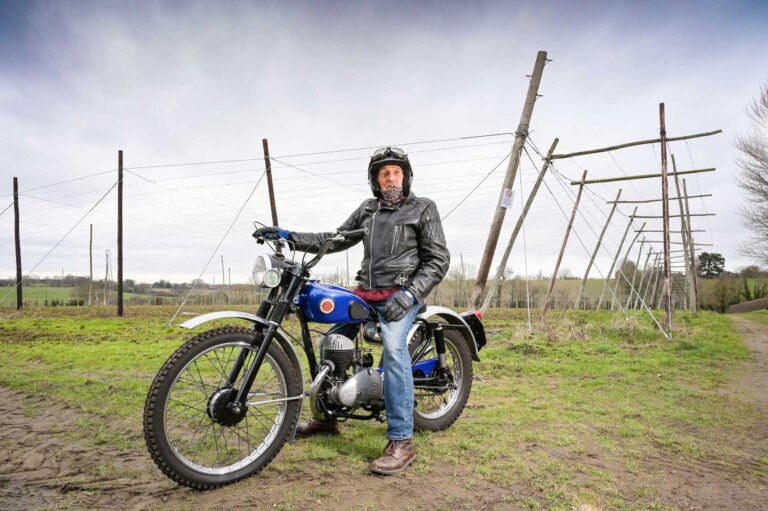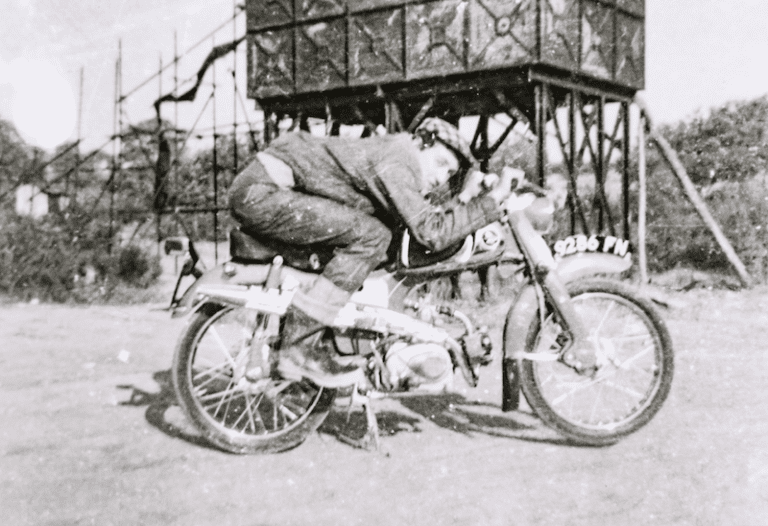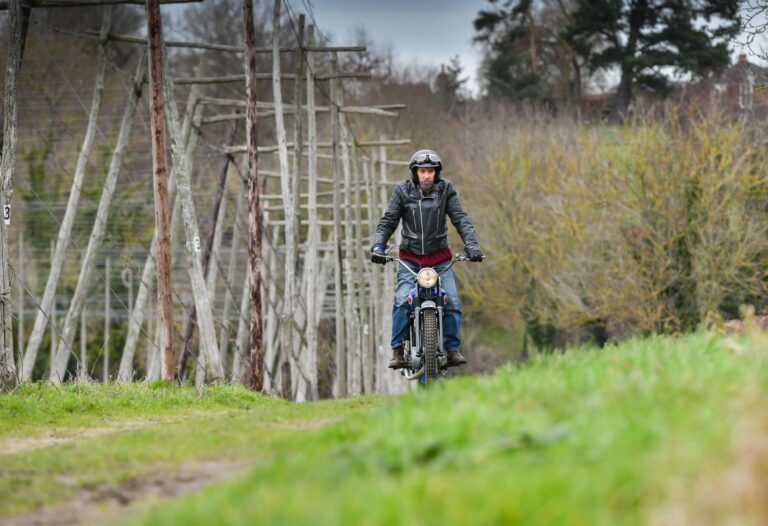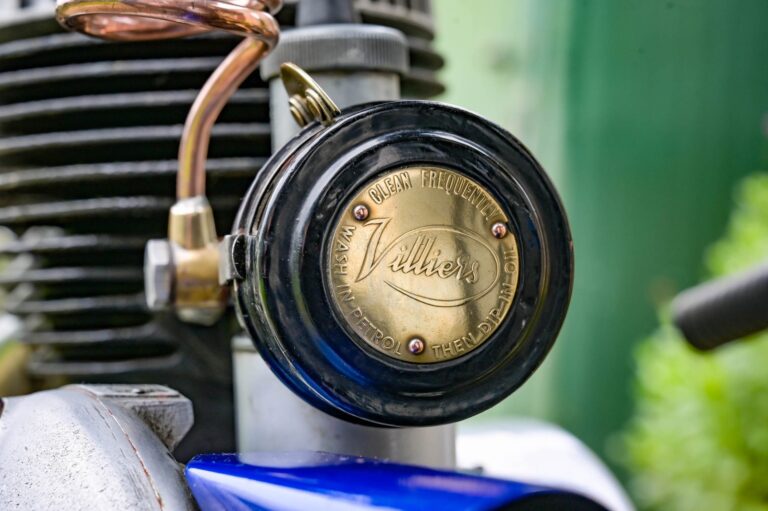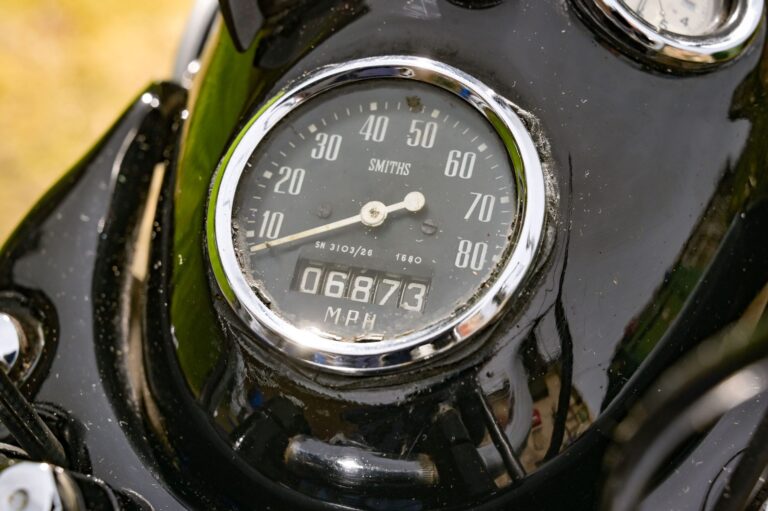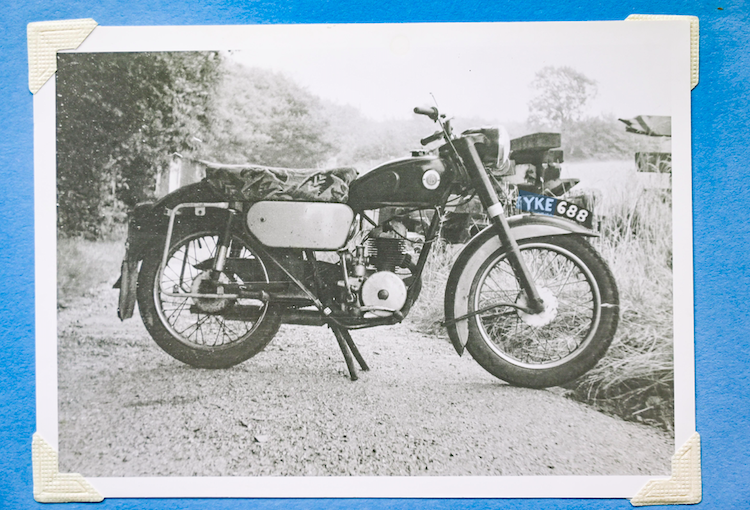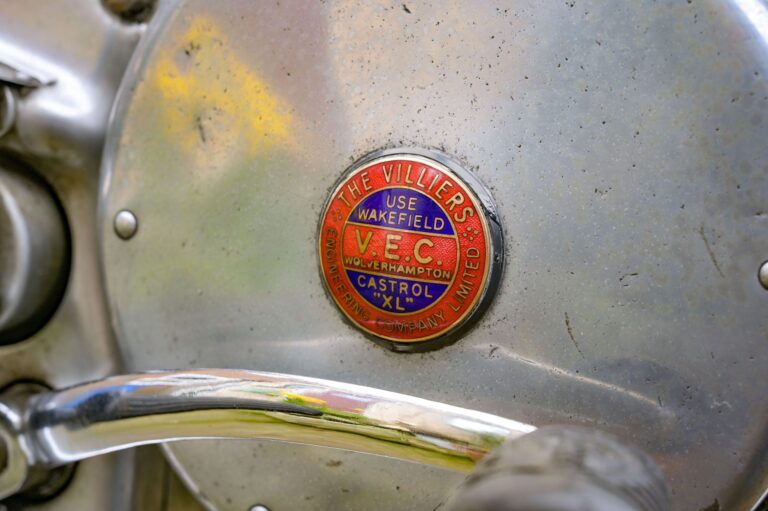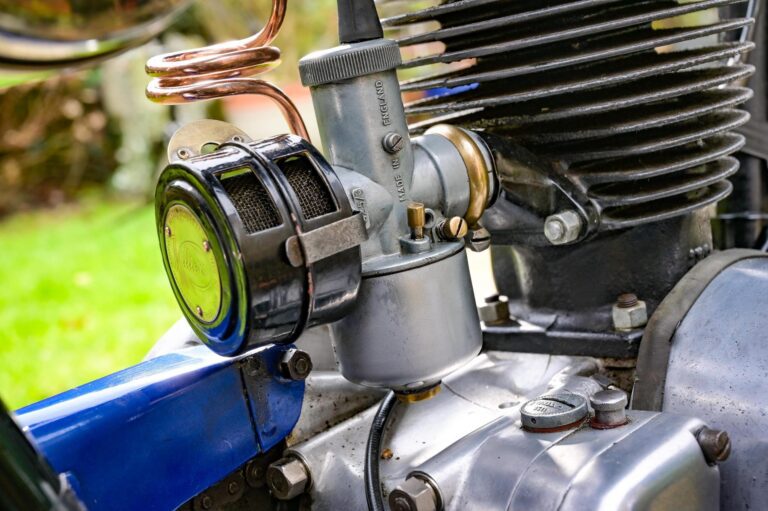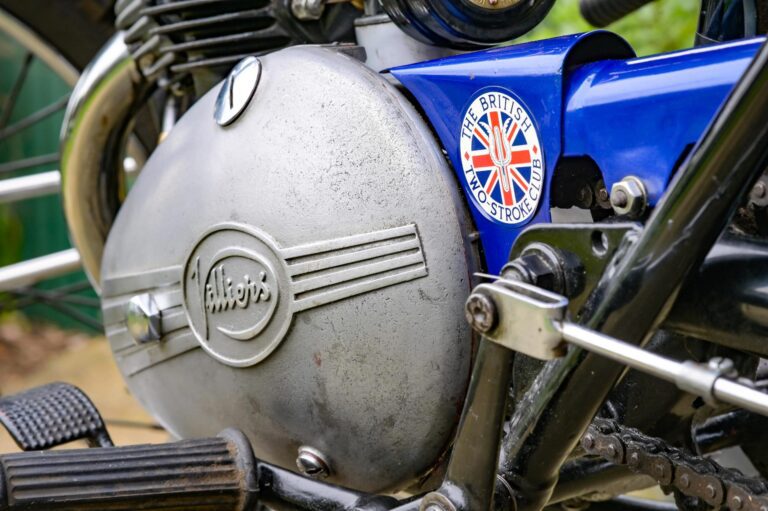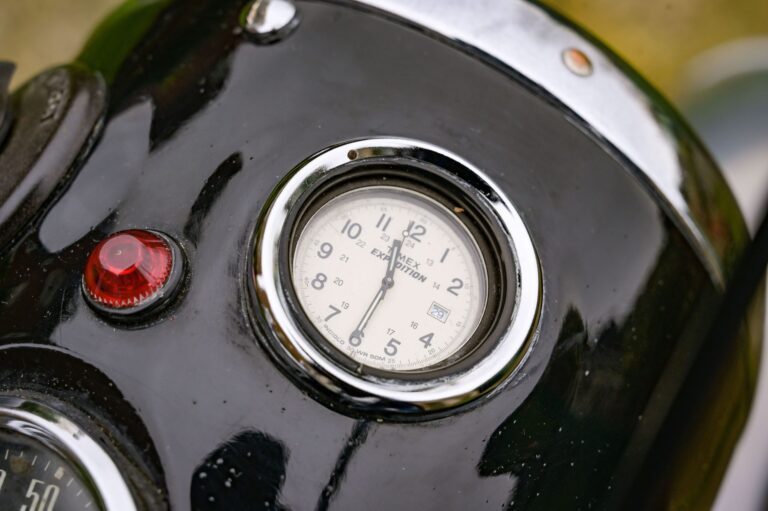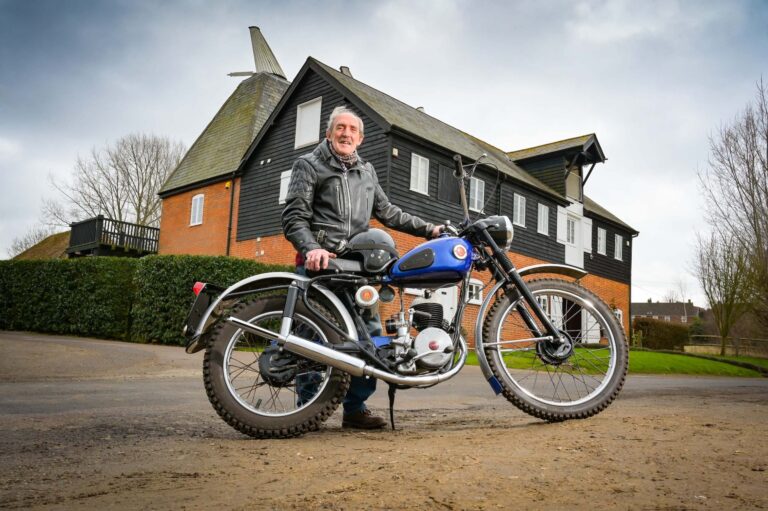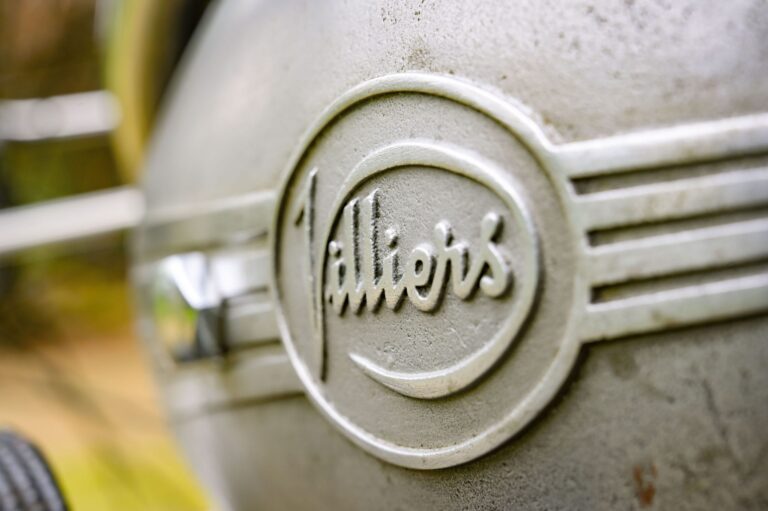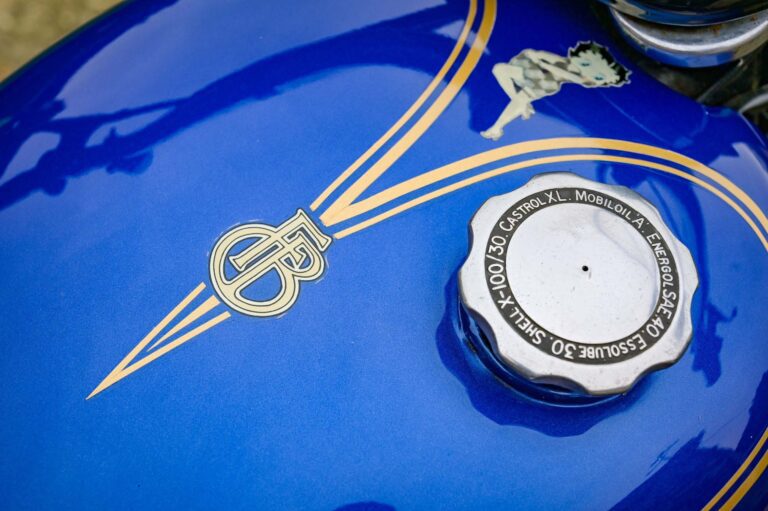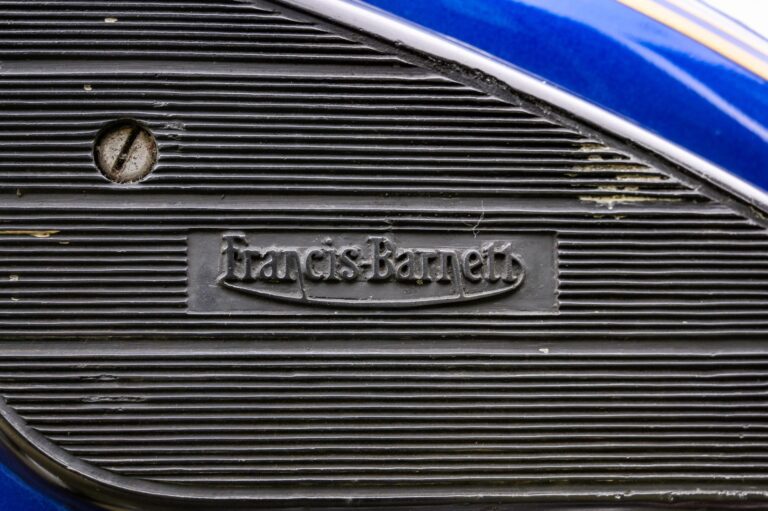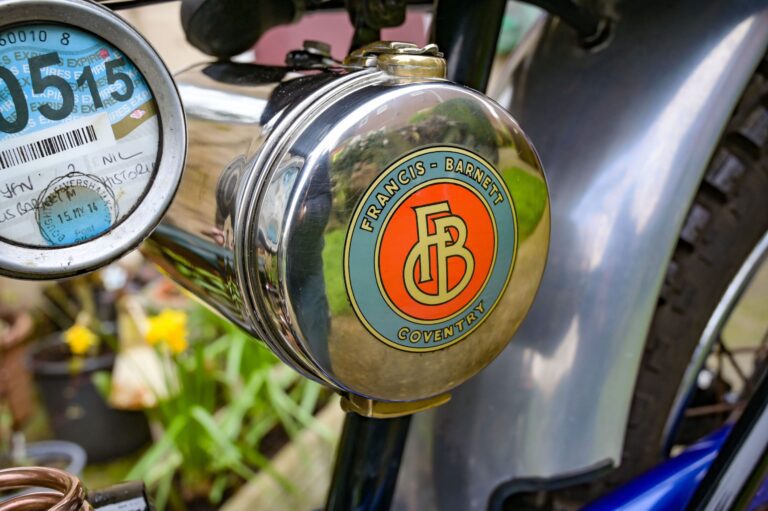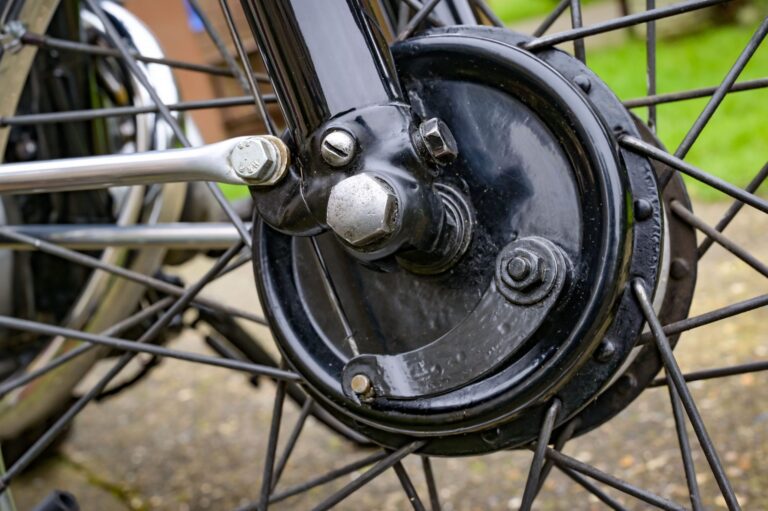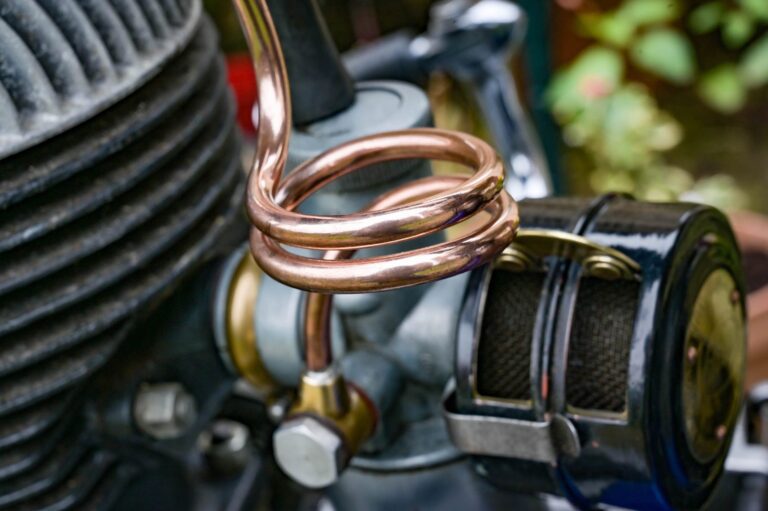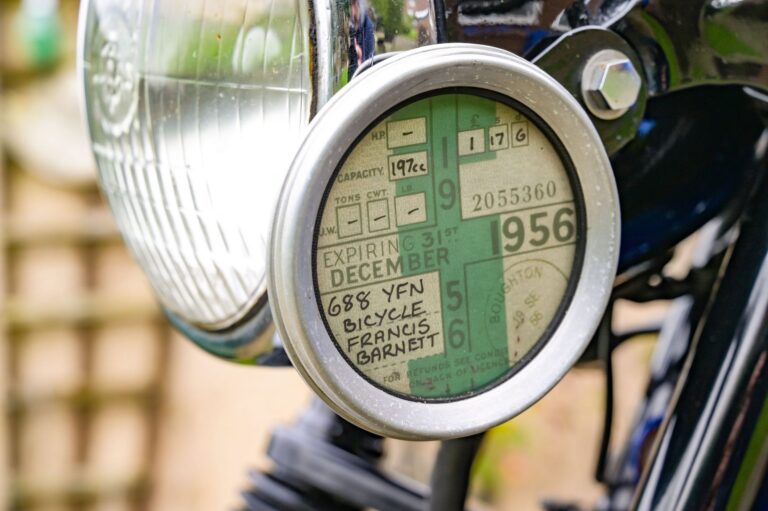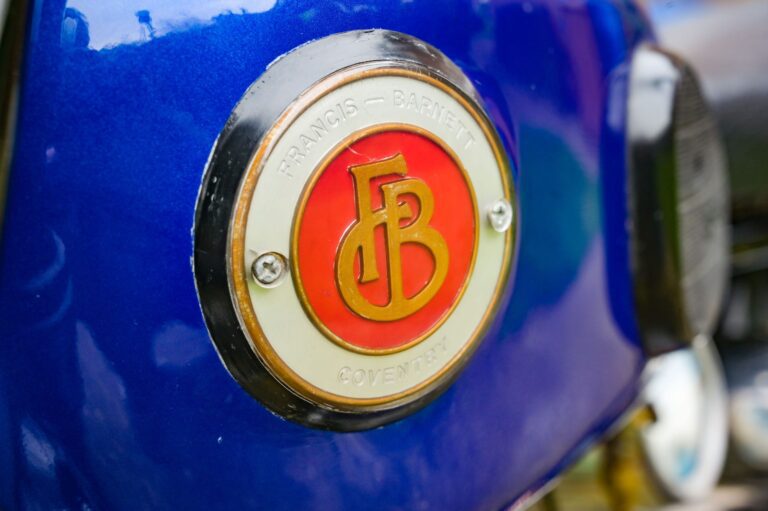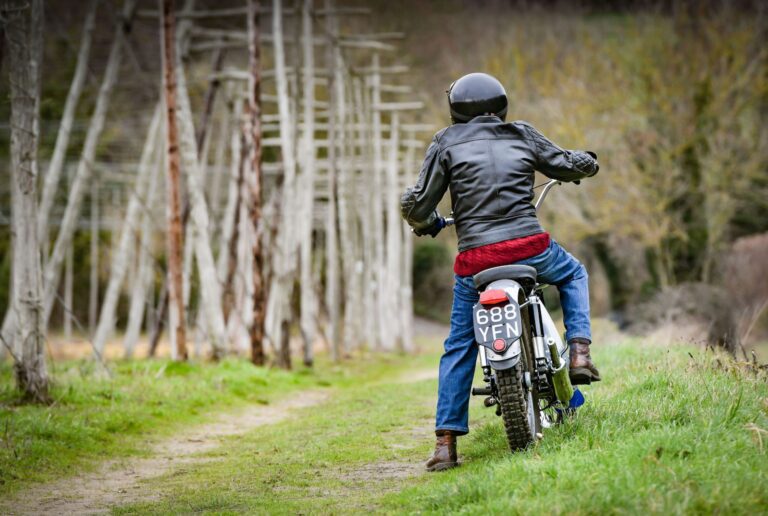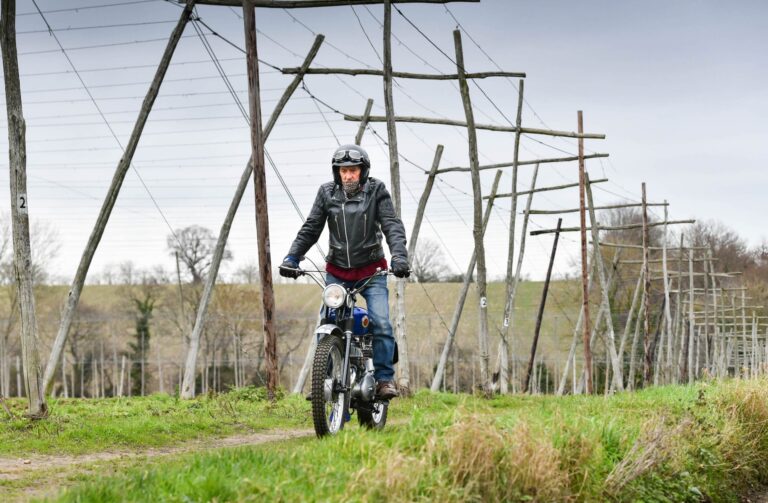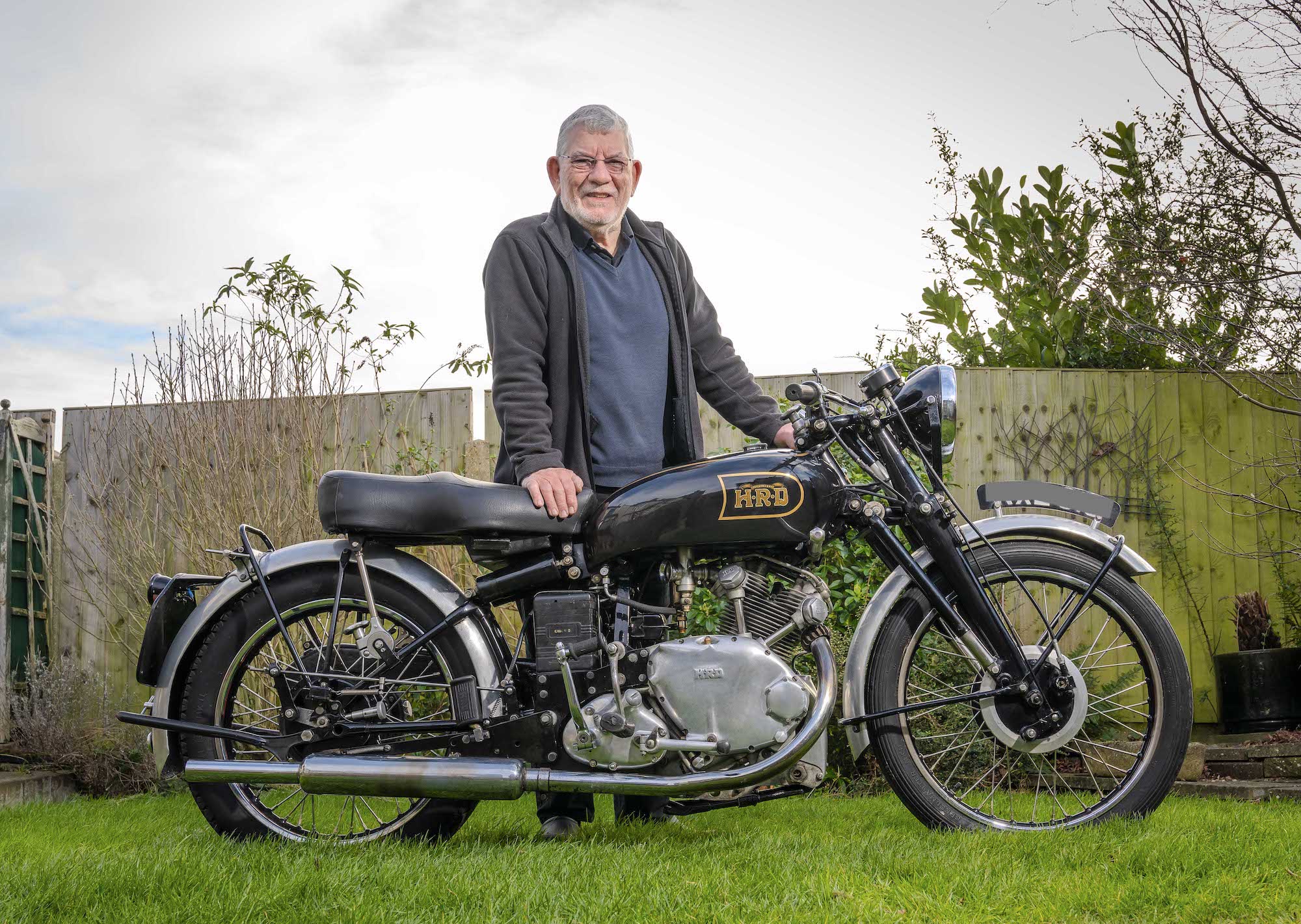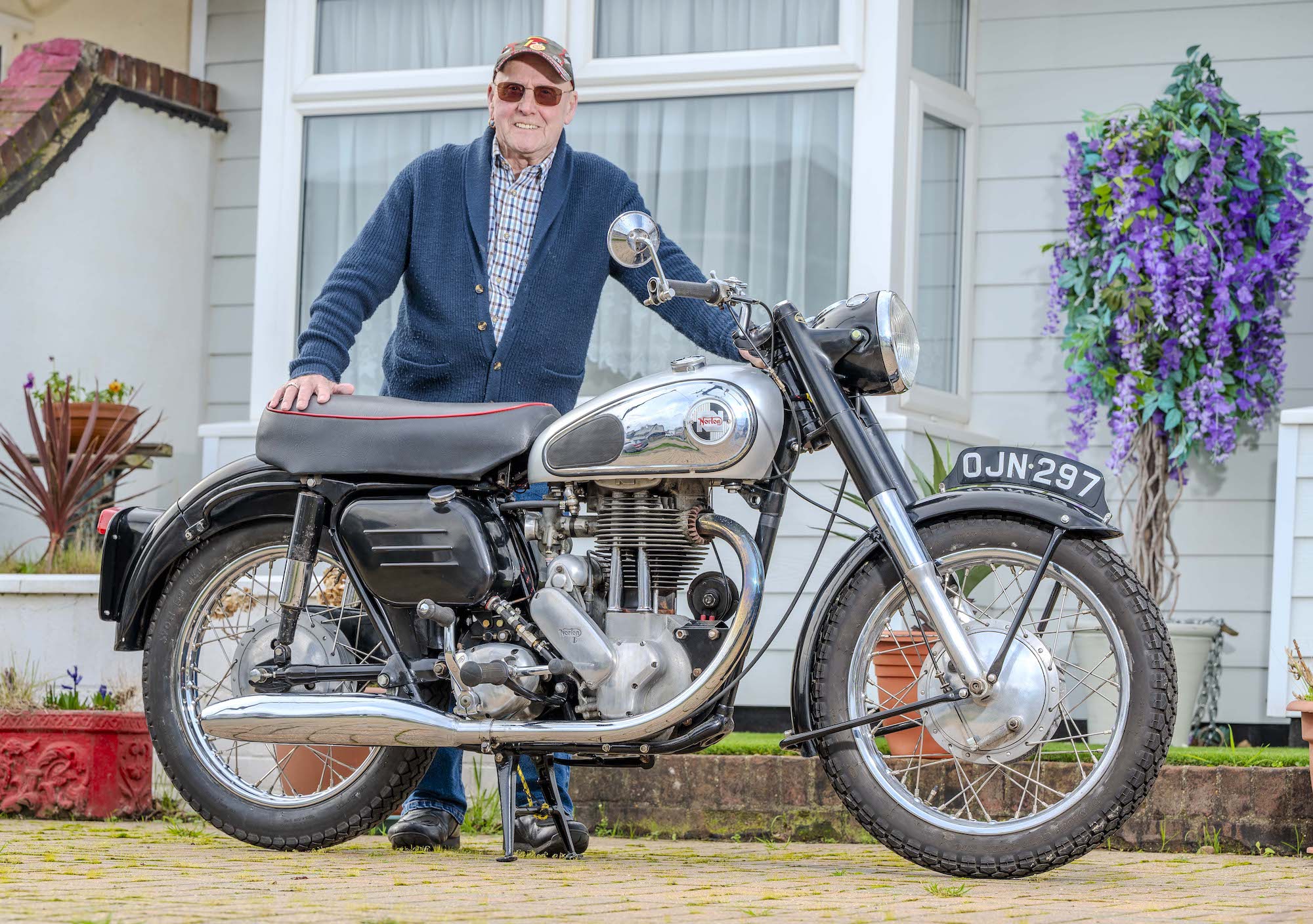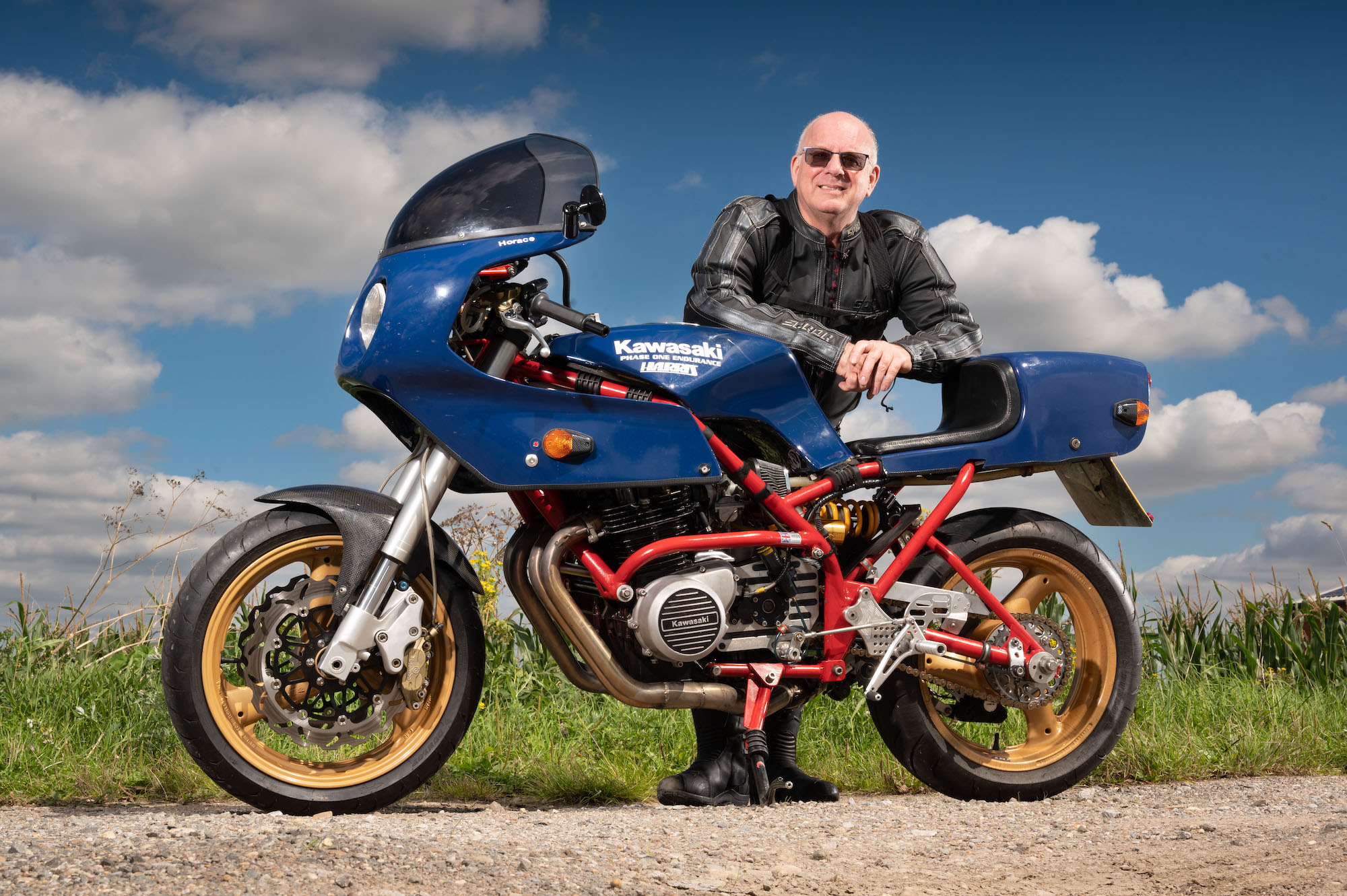You get the feeling Gary Tong could talk all day about his life with motorbikes, and still have anecdotes to spare.
We’ve come to talk about the 1956 Francis-Barnett Falcon that he’s owned since 1972, and we do, but there’s also so much more, all told with a boyish enthusiasm that belies his 74 years.
To say that Gary had fun in his teens – long before the Falcon appeared – would be an understatement.
Growing up surrounded by Kent’s hop gardens and orchards near Faversham, there was plenty of space to mess about on two wheels, with or without power.
“I was always mad on push bikes,” he says, “and we used to have a sort of cycle speedway on tracks round different woods and things.
“There’d be a gang of seven or eight of us, and we’d all go off to the grasstrack racing on our bikes. We cycled to Lydden from here, and to Rhodes Minnis, nearly at Folkestone.
“Because of our interest in the grasstrack and the speedway it was a natural thing for us to try to find old motorbikes.”
Tearing around a disused sand quarry on a 98cc James Comet
Gary’s first, when he was about 14, was a 98cc James Comet bought for about £5 and used for tearing around a nearby disused sand quarry.
“The sand was really hard packed down, almost like concrete with a loose layer on the top like a mini speedway track,” he remembers.
“There were really steep, death-defying drops, and if I think back now to some of the things we used to get up to…”
More than once, Gary was lucky to escape serious injury, including when he came “tanking downhill” on the Comet.
“At the bottom you’d hit this lovely hard-packed sand and you could get the back wheel out and broadslide,” he says.
“One day I overshot it and the bike went over on its side. The Comet has an open flywheel with cheese-headed screws to hold the aluminium plate on, and I hit the deck with my leg underneath the flywheel. The throttle hit the ground and was still revving, so the flywheel was slowly chewing into my leg. I’ve still got the scar now.”
BSA Bantam stripped down to basics
After the Comet came a BSA Bantam, an all-red former Post Office Telegram delivery bike that – like all the bikes used in the quarry – was stripped down to its basics.
“There used to be quite a gang that would come down and watch us, and one of them wanted to buy this Bantam,” says Gary, who decided to give the bike one last workout.
“I thought ‘I’ll get it going, just to make sure it’s OK’, and shot up through the woods. On the way down there was quite a lump and if you hit it right you could get the front wheel in the air.
“Well, I got the front wheel in the air but then it dropped out.
“So I’m up in the air, the front wheel’s gone and it comes down, bends the forks right under the engine, and I somersault over the top of it, no crash helmet.
“The bike clouted me in the back and knocked the wind out of me for quite a while. I was lucky to get out of that one – it was bloody frightening.
“Of course, when my mate came to buy the bike in the afternoon, there it was in its sad state. He didn’t buy it – I couldn’t persuade him.”
Back in the ‘60s, old two strokes were ten a penny, and Gary and his friends went through various bikes, picking them up cheap from garages who were happy to get rid of them.
“The big Vincents and Triumphs were all in the showroom, and this sort of stuff was all out the back piled high,” he says. “They used to say if there’s anything there you want, just give us 10 bob.
“I regret not picking up more bikes”
“Francis-Barnetts, Normans, Ambassadors, all little two strokes because you could play about with them and they were easy to maintain. And they looked like a mini speedway bike to us.
“I regret not picking up more bikes. I wish I’d had enough money and forethought to do them all up and keep them.”
Every bike was stripped down and worked on, sometimes in a double decker bus Gary’s mate Andy had on blocks in his back garden.
“On the top deck we had a little snooker table and a record player, so it was a place we went every evening if we had nothing to do,” he says. “Down below, they took the windows out and put double doors and a ramp in, so that was the workshop.
“It was like a youth club for us teenagers, great fun.”
Living in hop country, Gary could earn money working in the oast houses to help pay for his bike hobby, falling foul of his headmaster in the process.
“The hops start in September and, because I’d done a few odd jobs on the farm, the farmer said ‘do you want a job in the oast?’” he says.
“It was a full-time job for nearly three weeks, helping to dry the hops on three oil-fired kilns with big blowers. It was continual, and I used to sleep there in an old sack in a double bed, and even cook for the ‘dryer’ and his mate.”
The problem was, Gary should have been back at school in September.
Passing his test at 16
“Did I get told off by the headmaster when I went back to school?” he laughs. “I wasn’t allowed to work full time, but it was lovely because I’d earn quite a bit of money.”
After leaving school, Gary started work as an apprentice printer in Canterbury, initially cycling to work before buying and passing his test at 16 on a 50cc Honda C110 Super Sports Cub.
“It was like a little sports bike,” he says. “If you got your head down on a flat bit of road it really used to tank. I got it up to 60 one day.
“My old chap always maintained we paid our own way, and he was a bit astounded when he found out I was buying the Honda on hire purchase, so when we traded it in he paid for a 250cc BSA C15 SS80.
“I wanted a 350 but he said ‘no, a 250 is big enough for you’, bearing in mind I was only 16.”
Gary had the C15 when he met his wife, Peggy, the pair riding down to Cornwall in the summer of 1966.
“I remember it vividly because I was desperate to get to my sister’s at Portsmouth on the way back to see the World Cup final,” he says, that particular holiday ending on a high.
The following year, not so much.
“We were going across Salisbury Plain and the engine started to knock, and I said ‘we either go back or we chance it’,” he remembers.
“We chanced it, which was a bit silly really, but we got to north Devon and on the morning we went to come home we came out of the village, got to the top of the hill and it just went bang and stopped.
“I took the plug out and tried to turn the engine over, but the piston didn’t move, so I took it back and kept it in this guy’s garage, which he wasn’t very happy about.
“We came back to London, via Exeter, on the train. It was quite funny going through the underground with all our leathers on. Peggy’s father then diverted one of his lorries and brought the bike back.”
The couple were married in 1970, but Gary was still spending time most weekends in the sand quarry or the woods on various bikes.
Enter Fannie-B
When, in 1972, a friend from work said he was keen to get rid of his Francis-Barnett Falcon 74, Gary headed off to his place to negotiate for another bike to be thrashed around.
“I think he wanted £20 for it originally, so I said ‘well, it’s going to want a new chain, that’ll cost me £4 or £5, the lights don’t work, it needs a new battery’ – bearing in mind I didn’t want to do any of this,” he says. “I chatted him up so much he let me have it for a fiver.”
After getting the bike home, Gary stripped it down to a basic frame, wheels and engine, selling the tinware for £25.
“I made up a saddle for it, ally mudguards, a 21-inch front wheel, and my father-in-law built me an exhaust pipe,” he says. “I turned it into a little trials bike, but then I thought that it was in such good nick it seemed a pity to tear it up through the woods.”
Although the Falcon was never used as a trials bike, Gary carried on having weekend fun in the quarry and woods on other bikes until after the birth of his daughter, Zoe, in 1978.
“My son had already come along in 1974, but when my daughter was born I felt a bit guilty that I was clearing off every Saturday and leaving my wife with the two kids to do the shopping,” he laughs.
The “Fanny-B” meanwhile, was used as a road bike most days for about 14 years and, but for the home-made exhaust, gave very few problems.
“To get the bend in the pipe, my father-in-law welded all different sections together, which made it a bit weak,” Gary explains. “In the course of two or three years it began to deteriorate on that bend, and there were one or two little holes in it. I must have used up a tin of Gun Gum paste to try to keep them blocked up.
“He’d also cut the silencer in half and welded that together, so to cover the weld I cut out an aluminium shield.”
Getting stopped by a policeman
All of which came back to haunt Gary on one shopping trip into Canterbury.
“I passed this policeman and he started following me around,” he says. “I knew quite a few of the little back streets, and I was diving around trying to lose him. I eventually parked up and, sure enough, he found me.
“He said ‘that’s a bit noisy isn’t it mate?’ Well, it was noisy because the silencer had been cut down, but it wasn’t until he examined it and saw the holes in the exhaust pipe that he did me for emitting exhaust cases into the atmosphere.
“I went to court and they asked if I had any mitigating circumstances. I said ‘I’ve got a wife and two hungry kids to feed, and as for emitting exhaust gases, you want to try following some of the lorries and the East Kent buses. It didn’t work, they still fined me, £10 I think.”
A new, bespoke exhaust was fabricated by a firm in Dartford, then taken to Folkestone for chroming.
“I took it up over the engine but it still had the little silencer, so it was still noisy,” says Gary, who laid the Falcon up in 1986 when it was starting to “get a bit sad”.
“It really needed sorting out, but by then my brother-in-law had given me a book on Royal Enfields, and the very first bike featured was the Flying Flea, which I’d never heard of. I thought ‘I desperately need one of those’.”
Built for the second world war to be parachuted from aircraft with troops, many were later converted to road use.
Scouring the small ads, Gary found a man in Chessington who had a frame, engine and some wheel parts, buying them for about £100.
“I remember my wife saying ‘how much have you paid for that?!’,” he says. “It took me two to three years to do it – I made a lot of stuff myself.
Flying Flea fun
“It was good fun, but you had to be a little bit nifty with it going round the Canterbury bypass because it had a hand change. My dad got a bit worried because it was so low down that some of the wheels on the big lorries were bigger than me. On a wet day, you’d get covered.
“He said ‘I don’t like you on that road, let me get you a little Fiesta van’, so I took it off the road then.”
Meanwhile, the Falcon – not abandoned but certainly out of sight, out of mind – awaited its fate, stored in the printworks where Gary worked.
“This printworks was in a Victorian mansion, just like Downton Abbey, and it had a massive great pantry,” he remembers. “That’s where the Fanny-B went, and it stayed there for about four years until I was made redundant and I had to bring it home.”
We’re now into the ‘90s and, after a while, Gary decided that, this time, he’d “do it properly”, stripping the old bike down again and sending part of the engine to Villiers Services for new main bearings, a new big end and a rebore.
“It was quite comical really,” he says, “he told how much it was going to be and said ‘put the money in the cylinder and bolt the top on’. I boxed it up and away it went, and it came back months later.
“I got the exhaust pipe from Armours, new mudguards, and had the frame sandblasted and stove enamelled.
Spraying the tank a “nice Peugeot blue”
“A friend of mine sprayed the tank but I didn’t want it Arden Green, the correct and boring colour. I wanted it to look a little bit prettier, so went for a nice Peugeot blue.”
Before Gary could get the Falcon back on the road he had to jump through a few hoops, both mechanical and administrative.
First, he was told it would need a brake light to pass an MOT, despite not having one originally.
“I came home and thought ‘the only way I can do this is mess about with LEDs and things’, so I had to find somewhere to put a battery,” he says.
“I bought two stainless steel tea caddies and adapted them to house a battery, put a hinge from an old record player on, and wired up a little stop light using LEDs inside a reflector I took off my boy’s BMX bike.
“The reflector bevel is made from a thermometer out of a freezer.”
Then there was a lengthy dance with DVLA to get the bike legally registered after near enough 20 years off the road.
“When I decided to put it back on the road, I sent all the necessary information off to Swansea with the old log book and said what I was doing,” says Gary.
“They sent back a letter saying ‘you’re no longer the owner of this vehicle’. I rang them up and said ‘hang on a minute, it’s been in my shed 20 years’.
“They sold the number plate. In their eyes, the bike didn’t exist”
“Basically, after I lost interest in ‘86 they wrote to me when they brought SORN in, but because at the time I didn’t think I was going to do anything with it I didn’t SORN it – so they sold the number plate. In their eyes, the bike didn’t exist.”
Gary was told to have the bike examined by the police, so he and lifelong mate Andy took the bike to Canterbury police station, where an officer asked “what the bloody hell have you brought that in for?”
“I said ‘you’ve got to sign it off so I can have it registered’,” he says. “I showed him an old photograph of me with the bike and told him I’d had it since 1972.
“He signed it off, that was sent to Swansea, but then it was referred to the local office at Maidstone. It took me over a year to get that re-registered.
“The amount of phone calls I made, I was on first-name terms with the girl who was dealing with it.”
Finally, she called Gary at work, told him everything had been approved and offered him a choice of 10 registration numbers.
“I said ideally I’d like 197 FB,” he says. “‘You’re pushing it a bit now,’ she said. The original number plate was YKE 688, and I said it had to have a Kent number.”
In the end, Gary was happy with 688 YFN, a Canterbury number, and set off for the MOT centre in 2007, a year later than planned.
Riding the Falcon again at last
The improvised brake light passed, once the tester had found it, while a conversation about the weak headlight sparked memories of another bit of ingenuity that Gary employed back in the day.
“He said ‘it’s like having a candle in it’, so I told him ‘I know the roads, I feel my way around!,” he says. “The lights were dim because it was direct lighting – no engine revs, no lights.
“In the old days, I altered the wiring so that I could switch the rear light out and all the juice went to the headlight, but if you were on main roads you had to be a little bit careful about who was following you. Sometimes I had to turn the switch a bit quick to get the rear light back on.”
After 21 years out of the Falcon’s saddle, did riding it again bring the memories flooding back?
“Yeah, cor, did it?” says Gary. “I was in my 60s, and tanking round roads that I was really familiar with and I was 21 again. It brings it all back to you and there’s times where you start taking a few chances even now, which I shouldn’t!”
Gary still uses the bike today, just for “shooting around” and fun rides out with his friend Richard, who has an old AJS among other bikes.
Fanny-B is part of the family
One day, the bike may end up with Zoe, a huge speedway fan, or his grandson, 14-year-old Jay, while another Francis-Barnett, a 1954 Falcon 67 currently in the shed undergoing restoration, is eventually destined for Gary’s son Darran.
This all assumes people are still allowed to use petrol…
“I keep thinking that the way things are going, how are you going to adapt that to be electric?” he asks. “What’s going to happen to all these collectible bikes and cars? Are you going to be allowed certain days when you can put petrol in them? I don’t know.”
One thing’s for sure though, the Fanny-B will be with Gary right to the end; it’s “part of the family”, and a permanent reminder of the good times.
